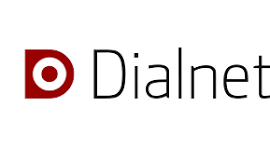Use of networks for students of university institute of technology state Trujillo
Keywords:
networks, TIC, educationAbstract
The present investigation was to determine the use of social networks by students of National Training Programmes (PNF) Electrical, Civil and Administrative Institute of Technology located Beatriz Trujillo State, located in the parish Beatrix, Municipality Valera, Trujillo state. In this study, descriptive research was employed to design field. The population formed in (1843) students, taking a sample of one hundred thirty four (134), using a questionnaire of twenty (27) items. The validity of the instrument was performed using expert judgment and reliability through Cronbach Alpha coefficient resulting 0.9752 to be very high. By applying the questionnaire, the results indicate as most connected , known and enrolled in a social network, use it as a socialization / hobby with friends and classmates , usually connecting from home at least once a day , dedicating at least 30 to 60 minutes, where networks are the most used Facebook and Twitter. Considered should give use as a teaching resource , which affects academic performance, Well thanks to the continued and effective use of social networking students have the opportunity to acquire important skills in using these to learn and communicate , just as some recommendations are made.
References
Abuín, N. (2009). Las Redes Sociales como Herramienta Educativa en el Ámbito Universitario. Revista Electrónica de ADA-Madrid. Volumen 3, número 3. Disponible en: http://serviciosgate.upm.es/ojs
/index.php/relada/article/viewFile/78/78 [Consulta: Junio 2012].
Burgueño, P. (2009). Clasificación de Redes Sociales [Documento en línea] Disponible en: http://jjdeharo.blogspot.com/ 2008/11/la-redes-sociales-en-educacin.html [Consulta: Enero 2013].
Chappel, N. (1992). Social Support and Aging, Butterworths Perspectives on Individual and Population AgingSeries, Canada.
Datanálisis. Internet en Venezuela. [Documento en línea] Disponible en:
http://issuu.com/jcarmona78/docs/internet_vzla_ 2010
García, A. (2008). Las Redes Sociales como Herramientas para el Aprendizaje Colaborativo: una experiencia con Facebook. En: Actas del XIII Congreso Internacional en Tecnologías para la Educación y el Conocimiento: la Web 2.0. Madrid: UNED.
Islas, O. y Gutierrez, F. (2011). Internet: El Medio Inteligente. CECSA. Ed. Patria Cultural. México.
Jareño, P. (2007). Impacto de las Redes Sociales. [Documento en línea] http://jessycarol.wordpress.com/el-impacto-de-las-rades-sociales-en- la-sociedad/. [Consultada: Diciembre 2012].
Pérez, B. (2008). Las Redes Sociales y la Globalización. Tesis Maestria Educacion Superior. Universidad Nacional Experimental Rafael María Baralt, Núcleo Trujillo- Venezuela.
Santamaría, F. (2008). Posibilidades Pedagógicas. Redes Sociales y Comunidades Educativas, Editorial: Telos, Nº 76.noooo
Tendencias Digitales (2012) Estudio la penetración de Internet en Venezuela. Disponible en http://tendenciasdigitales.com/1433/la-penetracion-de- internet-en-venezuela-alcanza-40-de-la-poblacion/
Zamora, M. (2006). Las Redes Sociales en Internet. [Documento en línea] Disponible en: http://www.maestrosdelweb.com/editorial/redessociales [Consulta: Agosto 2012]
Downloads
Published
How to Cite
Issue
Section
License
Copyright (c) 2014 Carlos Enrique La Cruz H, Ana Maritza Arellano A

This work is licensed under a Creative Commons Attribution 4.0 International License.








